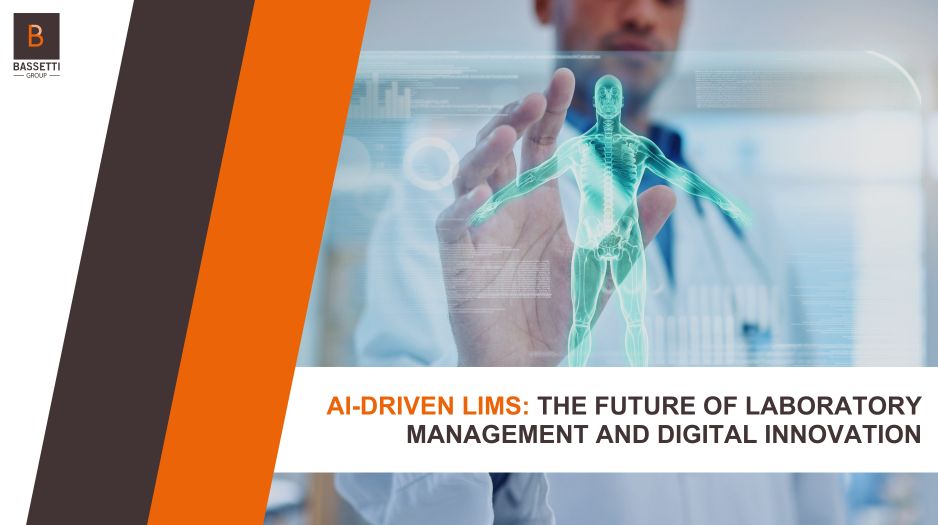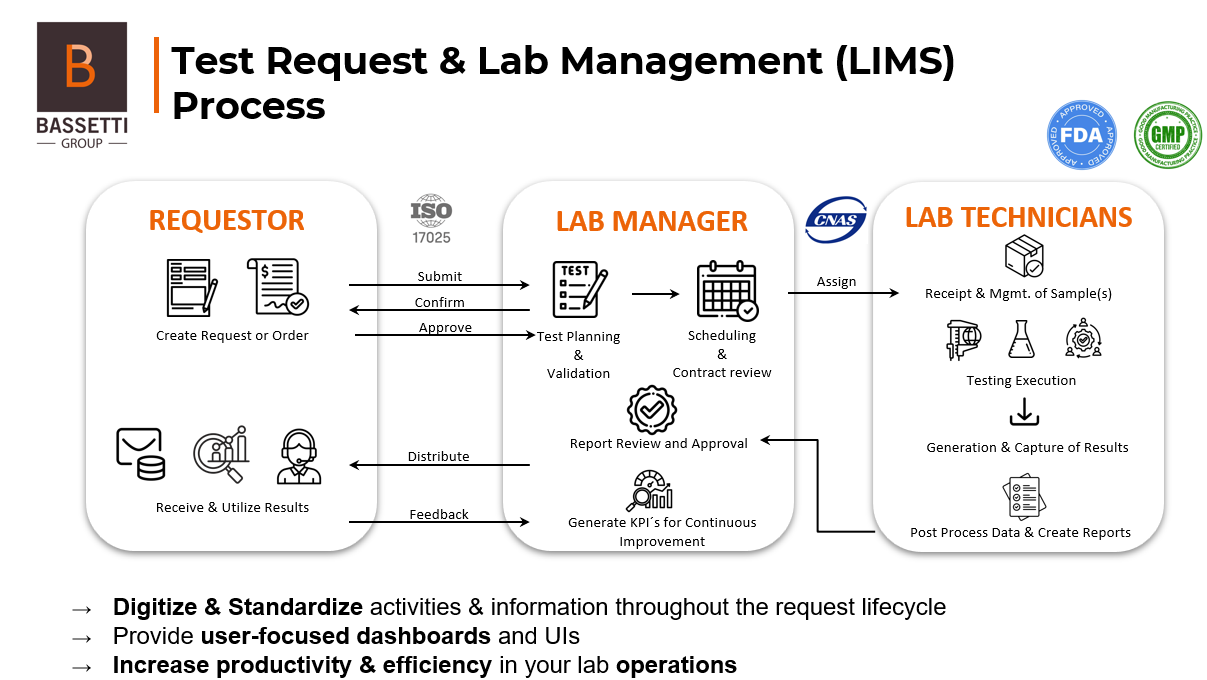Transforming Laboratory Management: How AI-Driven LIMS Are Shaping the Future of Labs
Artificial Intelligence (AI) has become a transformative force across industries, including laboratory science. From data visualization and results prediction to machine learning and automation, AI is revolutionizing how laboratories operate.
According to a 2023 report by McKinsey & Company, generative AI has the potential to add between $2.6 trillion and $4.4 trillion annually to the global economy by 2040, with sectors like life sciences and R&D expected to be major contributors. This highlights the increasing importance of integrating AI into laboratory environments, where managing complex data workflows is essential.
At the heart of this integration lies Laboratory Information Management Systems (LIMS), a critical technology that supports the organization and analysis of laboratory data. But what exactly is a LIMS, and how does AI enhance its capabilities? In this blog, we explore how AI-driven LIMS software is transforming laboratory management and addressing key challenges in the industry’s evolving landscape.

The Challenges for Laboratories in the Era of Industry 4.0 and AI
Introduction to Industry 4.0
Industry 4.0, also known as the Fourth Industrial Revolution, marks a shift towards smart automation, IoT (Internet of Things), and data-centric ecosystems. Laboratories are not immune to this transformation and face new challenges in adapting to digital-first workflows.
The Digitalization of the Laboratory

The full digital transformation of laboratories requires rethinking every step in the lifecycle of a lab request, from client submission to the final report. That’s where LIMS solutions come into play.
Key Challenges for a LIMS Tool:
- Challenge 1: Digital Continuity
A modern LIMS must digitize operations and ensure seamless data flow throughout the entire process. - Challenge 2: Productivity Optimization
Automation and centralized management help improve operational productivity in lab activities. - Challenge 3: Accessible Technical Repositories
Labs need an information system where data is securely accessible according to user roles and permissions.
These are just some of the benefits of laboratory information management systems, especially when they are powered by AI.
Introduction to Artificial Intelligence in Labs
To understand how AI-driven LIMS enhance laboratory operations, it’s helpful to define a few key concepts:
- Artificial Intelligence (AI): Technologies that simulate human intelligence, enabling machines to learn, reason, and solve problems.
- Data Visualization (DataViz): The graphical presentation of data to help stakeholders interpret complex results quickly.
- Machine Learning (ML): A subfield of AI where algorithms learn from historical data to make predictions or identify patterns
The Benefits of Integrating AI into LIMS Software
Integrating Artificial Intelligence into LIMS software significantly enhances laboratory efficiency, accuracy, and decision-making. Here are the core advantages:
- Predictive Analytics: AI models can forecast test outcomes, detect potential issues, and enable proactive decision-making, reducing delays and rework.
- Improved Data Quality: AI helps standardize data, flag anomalies, and minimize manual errors, ensuring accuracy and supporting regulatory compliance.
- Smart Workflow Automation: AI optimizes sample routing, technician assignments, and task scheduling, streamlining operations and reducing turnaround time.
- Real-Time Visualization: Interactive dashboards powered by AI offer instant insights into lab performance, quality metrics, and anomalies.
- Continuous Optimization: Machine learning algorithms learn from lab data to refine methods, improve reproducibility, and enhance test efficiency over time.
- Enhanced Compliance: AI-assisted audit trails and alerts help labs stay compliant with industry regulations and prepare easily for inspections.
- Lower Costs and Higher ROI: By automating tasks and optimizing resources, AI-integrated LIMS reduces operational costs and boosts long-term value.
Artificial Intelligence: How to Support Laboratory Activities with AI?
When integrated into a Laboratory Information Management System (LIMS), AI enhances operational efficiency by enabling predictive analytics, intelligent workflow automation, and advanced data visualization.
How Does Artificial Intelligence Support Laboratory Activities?
When integrated into a LIMS software, AI can:
- Enable graphical interaction with tests through advanced data visualization tools.
- Suggest optimized test formulations, assisting researchers in experimental design.
- Predict test results using machine learning algorithms, improving reliability.
- Detect outliers in complex datasets, increasing result accuracy.
- Enhance traceability and streamline the creation of compliance-ready reports.
According to McKinsey & Company’s recent insights on transforming R&D labs through automation, integrating AI and automation can significantly improve lab productivity, accelerate research timelines, and enhance accuracy in life sciences.
The Integration of AI into a LIMS Software Solution
A smart laboratory information management system doesn’t just collect data, it intelligently processes and interprets it. LIMS companies are now embedding AI into their platforms, turning traditional software into intelligent lab assistants.
Top features of AI-driven LIMS tools include:
- Auto-classification of sample data
- Intelligent scheduling and resource allocation
- Real-time alerts for process deviations
- Integration with IoT devices and lab instrumentation
By combining AI and LIMS, labs can not only manage more data but extract more value from it, unlocking insights that were previously buried in spreadsheets or isolated systems.
TEEXMA for LIMS: The Laboratory Information Management Software, Enhanced by Artificial Intelligence
TEEXMA for LIMS, developed by the BASSETTI Group, is a next-generation LIMS software solution that incorporates AI-driven features for end-to-end laboratory management.
Why TEEXMA for LIMS Stands Out
- Built on a flexible architecture for customized lab workflows.
- Equipped with AI modules for data prediction, anomaly detection, and visualization.
- Offers strong traceability, making it ideal for regulated industries.
- Supported by a robust technical knowledge base accessible based on user roles.
Whether you’re in pharmaceuticals, materials science, or environmental testing, TEEXMA for LIMS offers the right mix of technology and usability to enhance lab operations in the era of AI and Industry 4.0.
The Future of Laboratory Management is Intelligent
As labs continue to digitize, the synergy between Artificial Intelligence and LIMS is undeniable. A well-implemented AI-driven LIMS tool offers far more than digital record keeping; it becomes a central intelligence hub, driving innovation and operational excellence.
Whether you’re exploring what a LIMS is or evaluating LIMS companies for your next investment, remember: the future belongs to those who embrace AI-driven LIMS solutions.
